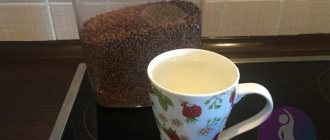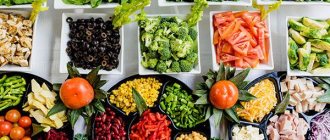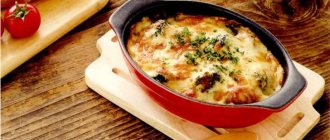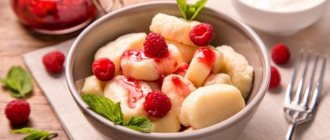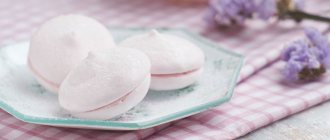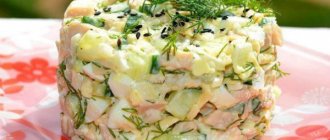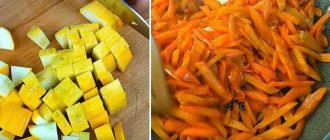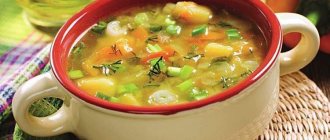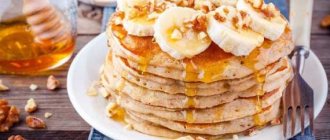Beef fat is one of the most famous animal fats in cooking. It is obtained from the fatty tissues of exclusively fresh meat carcasses that have not been previously frozen.
- We recommend reading: the harm and benefits of fats
CALCULATORS FOR THOSE WHO WANT TO LOSE WEIGHT
During processing, beef does not lose a single gram of beneficial properties.
How to melt beef fat at home
I mostly cook my fried dishes using edible rendered beef fat. It has a neutral taste. It gives a nice crust. Does not oxidize at high frying temperatures. Stable. Stores well in the refrigerator. Rendered beef fat has a very pleasant, warm aroma.
I buy beef fat at the market from butchers. At home I soak the fat in cold water for a day. I wash it. Then I freeze it for a few days. In my recipe, the fat comes after this preparation. It is white and clean.
Types of beef fat
The product offered to the consumer is classified in several varietal categories:
- extra grade To obtain it, the raw material is heated at a process temperature of at least +32°C. At the specified temperature, the fat becomes transparent and liquid in consistency. High quality beef lard, light milky in color, is used as the base.
- top grade. The solidification temperature is about +19°C, if it rises to +27°C and above, the result is a transparent, liquid fat, light yellow in color with a pleasant taste;
- I grade. In terms of appearance, it is practically no different from a premium product; the taste is reminiscent of fried cracklings. The molten product is characterized by transparency;
- II grade. It is distinguished by a sharp smell of fried cracklings and a pale milky hue; when melted, it becomes cloudy.
Attention! The extra grade product is the most beneficial for the body.
Calorie content and chemical composition
This is a high-calorie product, the calorie content of which varies slightly among different species and reaches approximately 900 kcal. Proteins and carbohydrates in its composition are present in the form of minor impurities. It also contains the following vitamins and organic compounds in significant quantities (per 100 grams):
- retinol and other substances related to vitamin A - 0.03 mg;
- vitamin K—6.0 mg;
- tocopherol (E) - 1.4 mg;
- beta-carotene - 0.05 mg.
In addition, it also contains a number of minerals, namely (per 100 grams):
- sodium - 11 mg;
- phosphorus - 8 mg;
- potassium - 6 mg;
- copper - 80 mcg;
- manganese - 1 mcg.
Important! The most valuable is beef fat of the “extra” variety, which is distinguished by a high degree of purification, low melting point (not higher than +32
°
C), light consistency, pale white color. Other varieties, namely the highest, first and second, have foreign odors and tastes, a higher melting point, as well as a different color, from yellowish to greenish-gray.
Beef in onion sauce
Category: Hot dishes Meat dishes Hot beef dishes
The most tender beef, in an amazingly delicious onion sauce! This dish will take some time to prepare, but your personal involvement is minimal! It's very convenient and very tasty! (Thanks to Nina Niksya for the recipe.)
Beef Onion Sour cream Mustard Wheat flour Butter Salt Black pepper
What are the benefits of beef fat?
The beneficial substances contained in beef fat provide benefits to the body. Thanks to the use of this product in the human body, the following is noted:
- stimulation of hair growth;
- normalization of metabolic processes;
- improvement of skin condition;
- reducing the risk of developing diseases of dermatological origin;
- increasing the body's resistance to colds;
- activation of the adrenal glands (hormone synthesis);
- protection of nerve fibers of both the brain and spinal cord when animal fats perform insulating functions;
- improvement of the digestive process.
Attention! The manifestation of beneficial properties is observed only with moderate consumption of the product, at the rate of 1 gram of fat per 1 kg of human body weight.
Harm
Beef fat is harmful primarily to consumers who uncontrollably eat foods fried with it or in its pure form. This is due to the accumulation of large amounts of cholesterol in the body, which leads to cardiovascular diseases and diseases of the gastrointestinal tract.
Beef fat is harmful to people suffering from diseases of the liver, kidneys, gallbladder and gastritis due to high acidity of gastric juice.
Due to the fact that the melting temperature of fat is higher than the temperature of the human body, its digestion is difficult, which can harm our stomach. The process of digesting beef and its by-products consumes 40% of the body's energy.
Unprocessed fat residues can accumulate in the colon, resulting in an increase in the number of putrefactive bacteria that poison our body. Poor quality beef treated with antibiotics and hormonal drugs also poses a danger to humans.
- We recommend reading about pork fat
How to cook “Rendered beef fat” step by step with photos at home
Step 1Link
There are several ways to render beef fat. For small quantities I use the quick method. My fat is ready to be cut up for rendering.
Step 2Link
Cut the fat into small pieces. It is convenient to do this when the fat is slightly frozen.
Step 3Link
Place the chopped fat in a single layer on a hot frying pan.
Step 4Link
Heat the pieces of fat over medium heat, stirring them occasionally.
Step 5Link
Gradually the pieces turn into golden brown cracklings, and there is more and more melted fat in the frying pan.
Step 6Link
All the pieces turned brown and became crispy. They float in melted fat. Turn off the fire.
Step 7Link
I remove the cracklings from the pan with a slotted spoon.
Step 8Link
Fresh hot beef cracklings taste great with salt.
Step 9Link
I pour the prepared fat from the frying pan into a jar. I repeat the melting with the remaining fat.
Step 10Link
The jar is full of rendered beef fat. While the fat is hot, it is golden and liquid.
Step 11Link
The fat has frozen. Now it is creamy in color, with a light pleasant aroma. Yield 200 grams. Store rendered beef fat in the refrigerator. This way it will last you longer.
Beef fat in home cosmetology
This is a popular product for cosmetic procedures. It perfectly preserves the lipid layer, especially during severe frosts, and saves a chapped face. Masks based on it also stimulate hair growth and strengthening.
Rejuvenating ointment
To rejuvenate the skin, use the following composition:
- dill, linden blossom, oak bark, taken one tablespoon at a time, pour boiling water and simmer over low heat for up to 20 minutes;
- the broth is filtered. Next, stirring thoroughly, add melted fat.
The cooled ointment is ready for use and should be stored in the refrigerator.
Mask for dry skin
To make your skin smooth, prepare a mask:
- grind cabbage leaves in a blender;
- add the melted component to the resulting mass, beat with a broom or mixer until the consistency of thick sour cream is formed;
- Apply the product for 10 minutes to a previously cleansed face;
- After time, wash off with warm water.
Hair Mask
A mask will help strengthen your hair by adding water (1 cup) to beef fat (100 g) and boiling until the liquid has completely evaporated. The contents are cooled slightly, then filtered. Add alcohol (1 teaspoon) to the broth and mix thoroughly.
After rubbing the scalp with clove oil, massage for about 10-15 minutes. Next, rub the prepared mixture into the scalp for 5 minutes. Wrap a hot towel around your head.
At the end of the procedure, wrap your hair in a dry towel and leave it overnight. Then the hair is lubricated with Provençal oil and rubbed into the scalp, performing a massage. The procedure is completed by combing the hair using a sparse comb.
In folk medicine
Beef fat of any grade is suitable for healing compositions. Prepared homemade ointments perfectly heal wounds, cuts, treat burns, and even make postoperative stitches less noticeable.
Recipe for an effective healing ointment.
- First, we render two types of fat separately: pork fat (500 g), beef fat (600 g).
- After filtering, combine both products in a stainless steel pan.
- We cut 3 bunches of St. John's wort, separating the flowers from the stems.
- Add the chopped plant to the prepared fat mixture. Remember, the fat should cover the added flowers/stems by about an inch.
- Close the lid. After this, simmer the pan in a water bath for about half an hour.
- Wrap in a towel/blanket and place in a warm room for 3 hours.
- At this time, prepare mumiyo - dissolve 2 g of the substance in a tbsp. spoon of warm liquid.
- To melt the fat, the infused product should be slightly warmed.
- Next, filter the fat base through gauze/sieve and place in a glass container.
- We also add the dissolved mumiyo here.
- Using a wooden daddy, mix everything thoroughly, moving strictly clockwise until the base hardens.
- The finished healing ointment can be stored for a long time in a cold place.
Beef fat is a storehouse of essential microelements and acids that support the functioning of vital human organs. Its fatty acid composition can strengthen hair and nails in a short time, improve the condition of the skin, accelerating its healing. For this reason, this product is so in demand in medicine and cosmetology.
To get a positive result from using fat, you must adhere to the daily dose. After all, a high content of acids - saturated, unsaturated, polyunsaturated - can have the opposite effect if consumed excessively. Therefore, remember - everything is useful in moderation.
For information on how to properly melt fat, see below.
Beef fat is a product that is famous for its use not only for culinary, but also for medicinal purposes.
It has a fairly high calorie content, about 896 kcal. Rendered beef fat is used in food; its unique chemical composition distinguishes it from similar fat. It is important to know what benefits and harms this product has for the human body.
Application
Rendered bone fat can be used for frying vegetables, soups, and in culinary products. It is used in the manufacture of lipstick, semi-liquid soap, cigarettes, and cosmetics.
Let's look at how to properly prepare bone broth. Before cooking, soak the bones in water for several hours, then put them in the oven for roasting. Then place the roasted bones (1 kg) in a cauldron and fill with cold water (1.25 l). Cover the cauldron and place on high heat to boil the bones faster. When the water boils, open the lid, skim off the foam and some fat. Reduce heat to minimum. Pork bones are cooked for 3 hours, beef bones for 5 hours. The longer the bones cook, the tastier the broth will be. After boiling for 2 or 4 hours, add salt, onion, celery, parsley, and carrots. The broth will be aromatic and tasty. In order for the bones to release as many useful substances as possible, they are prepared a second time in autoclaves. The bones that have been boiled are placed in an autoclave, lightly filled with water, and boiled for 2 hours. Then you need to take out the contents and strain through a thick cloth. The resulting bone fat, as well as the broth, can be used to prepare the following dishes.
Market Analytics
- Global Cosmetic Packaging Market – Focusing on Digital and Sustainability
- Overview of the global cosmetics market in 2021. The best year in the history of the global beauty market over the past 20 years
- Cosmetic innovations for 2021 or the beauty industry in a new format
Convenient search for beauty salons on our website
Beauty salons in Moscow Beauty salons in St. Petersburg Beauty salons in Ekaterinburg Beauty salons in Novosibirsk
Latest blog posts on our website
- Naturecream / Autophagy - prolonging skin youth
- Naturecream / Cosmetics Anti - pollution skin health in the metropolis
- Prostye-sovety / Hairstyles and haircuts for thick faces
- _angel_ / Korean cosmetics
- Naturecream / What Elastin can do in cosmetics
- Naturecream / NUF = Moisturizing
- Naturecream / What everyone forgets when applying cream with SPF
- Prostye-sovety / Top 7 best thermal waters. How to save your skin from drying out
- Prostye-sovety / Dry shampoo: how to wash your hair on the road if there is no water
- SNA-Beauty / PDO porosity class 1 - why is this important?
Latest forum topics on our website
- NikiO / Facial massage and gymnastics
- Lado / Recommend a good lengthening mascara!!!
- Germanica / Moisturizing face cream. How to choose?
- zulihanbashanova / Looking for work on the Internet..
- Toma / Laser cosmetology
Other articles in this section
| Almond oil Almonds are a short tree belonging to the plum genus. The plant has an unusual feature: its flowers bloom first, and then leaves appear. It is considered a plant of the subtropical and tropical zones. It grows in such countries of the Mediterranean region as Tunisia, Greece, Italy, Spain. It is also found in the USA and China. |
| Low-calorie margarine Margarine is a product made from animal fats and vegetable oils with the addition of various components. It is an emulsion of water in oil. France is considered the birthplace of margarine; it was invented as a cheap substitute for butter. |
| Cream margarine Close in composition to butter, cream margarine is considered. It contains animal fats and vegetable oils. Moreover, it contains up to 25% butter. |
| Walnut oil Walnuts have been cultivated since very ancient times. All parts of this tree are used by humans. A tasty, healthy jam that contains a lot of iodine is made from green unripe fruits. And the seeds are used in cooking in many dishes. From these very seeds, through cold pressing, a unique nut oil is produced, which has an unusual “nutty” flavor and is highly valued for its healing properties. It belongs to elite and expensive products. |
| Pumpkin oil Pumpkin oil is a natural product of plant origin, which is obtained by cold pressing from pumpkin seeds. The unique beneficial properties of this product were known back in ancient times, and pumpkin oil was called “black gold”, since the cost of a small bottle of pumpkin oil was equal to the cost of a gold ring. |
| Rendered beef fat Animal fats are an irreplaceable product in cooking. They are taken from bone tissue, internal organs, and fatty parts. The prepared dishes are not only tasty and aromatic, but also healthy for the human life cycle. |
| Nutmeg Oil European explorers traveled around the world in search of the spice nutmeg, and not without good reason. Nutmeg, or Nutmeg oil, is not just a popular cooking ingredient with a sweet, warm, spicy aroma. It also has a wide range of medicinal properties, which made it a part of ancient cultures. Nutmeg oil is not only an expensive spice widely used in haute cuisine, but also an important component of traditional Chinese Indian medicine. |
| Sunflower oil Sunflower oil is obtained from sunflower seeds, a crop that has long been grown for oil production. Sunflower is one of the most accessible and cheapest sources of vegetable oil, therefore it is widely cultivated in many countries. Sunflower oil is very common on sale in our country; in popularity it exceeds such well-known vegetable oils as olive oil in other countries. |
| Poppy oil Poppy oil began to be used in Ancient Greece, since then and to the present day it has been popular. It is obtained by cold pressing poppy seeds. Unrefined oil smells pleasantly of poppy seeds, and after cleansing the smell disappears completely. The color of the oil varies from yellow to golden. |
| Grapeseed oil Grapeseed oil is a vegetable oil produced using two methods: cold pressing and hot extraction of seeds. The first method is more labor-intensive and the yield of the finished product is much less. It is rarely used to extract grape seed oil. In terms of its beneficial properties, oil produced by cold pressing is the best. |
General information
Good, high-quality fats of plant and animal origin are not harmful to the body, you should not be afraid of them, but should be included in the structure of your daily diet. Until recently, low-fat diets were very actively prescribed by nutritionists and other specialists. Today, scientists have proven that this can lead to irreversible and quite severe consequences.
Materials about proper nutrition are covered in the video “Atherosclerosis”. It describes in detail what this pathology is, why it occurs and how to deal with it.
Join the Club of Former Hypertensive Patients
, download gymnastics, which has already helped hundreds of thousands of people overcome pressure surges and hypertension. Get the most current and correct information about problems related to blood pressure, osteochondrosis, atherosclerosis, ask your questions to Dr. Shishonin and just communicate.
A little about biochemistry
Dietary lipids can be divided into two large groups:
- healthy fats (saturated fatty acids and PUFAs);
- “harmful” or pathological fats (trans fats).
Fat consists of glycerol and fatty acids. Glycerol contains three carbon atoms, three hydroxyl groups (OH) and 4 hydrogen atoms. The glycerol molecule binds through its hydroxyl groups to three fatty acid residues. They can be saturated or unsaturated.
Higher fatty acids contain a huge number of carbon atoms. There can be 16 or more. Glycerol bound to three fatty acids is called a triglyceride in biochemistry. In fact, this is the fat that you and I eat.
The saturation of fatty acids is determined by the number of hydrogen atoms that fill the carbon. Each carbon atom has four bonds because it is tetravalent. All carbon bonds that are not interconnected are saturated with hydrogen. At the end of the carbon chain, fatty acids must have a carboxyl group (COOH)
Saturated fatty acids are mainly present in animal fats. The consistency of fats depends on the content of carboxylic acids. Lamb fat contains about 70% saturated acids, and the rest is mono- and polyunsaturated fatty acids. Pork fat contains much more PUFAs compared to lamb and beef fats.
Some experts and readers are confident that saturated fatty acids are harmful to health. Dr. Shishonin claims that this is far from true. When consuming animal fats, the body receives both saturated and unsaturated fatty acids.
Saturated fatty acids, as well as unsaturated ones, are necessary for the normal development of the body. Doctors recommend consuming saturated and unsaturated fats, as they perform a number of vital biological functions:
- are included in the structure of biological cell membranes;
- participate in the formation of bioactive substances (steroid hormones, neurotransmitters, vitamins F and D3);
- essential fatty acids prevent the development of atherosclerosis;
- stimulate the synthesis of bile acids.
Unsaturated fatty acids are divided into mono- and polyunsaturated based on the number of double bonds in the molecule. In their structure, carbon atoms can bond with each other using two valences, thus forming double bonds. If an acid molecule has one double bond, it is a monounsaturated fatty acid (oleic acid). PUFAs (linoleic, arachidonic, linolenic) include acids whose structure contains two or more double bonds. It is worth noting that PUFAs predominate in vegetable oils.
The viscosity of cell membranes is determined by the ratio of saturated and unsaturated fatty acids in them. For example, some cells require a fluid membrane. They are characterized by rapid metabolism (pulmonary epithelial or intestinal cells); saturated acids should predominate in somatic cells.
You can increase the amount of fatty acids in your body through animal or vegetable oils. Unrefined oil contains more vitamins and minerals. Refined contains slightly less of these components. It can be used for frying, but it is better not to use unrefined for these purposes, as it produces more harmful decomposition products.
Advice.
Don't be afraid to include animal and plant fats in your diet. Shishonin notes that the ideal ratio of saturated and unsaturated acids is present in flaxseed oil. It is often prescribed to prevent a lack of metabolic products in the body. The doctor recommends consuming 15 to 20 ml of this oil per day. It has a good effect on the functioning of the nervous system and cellular transport.
